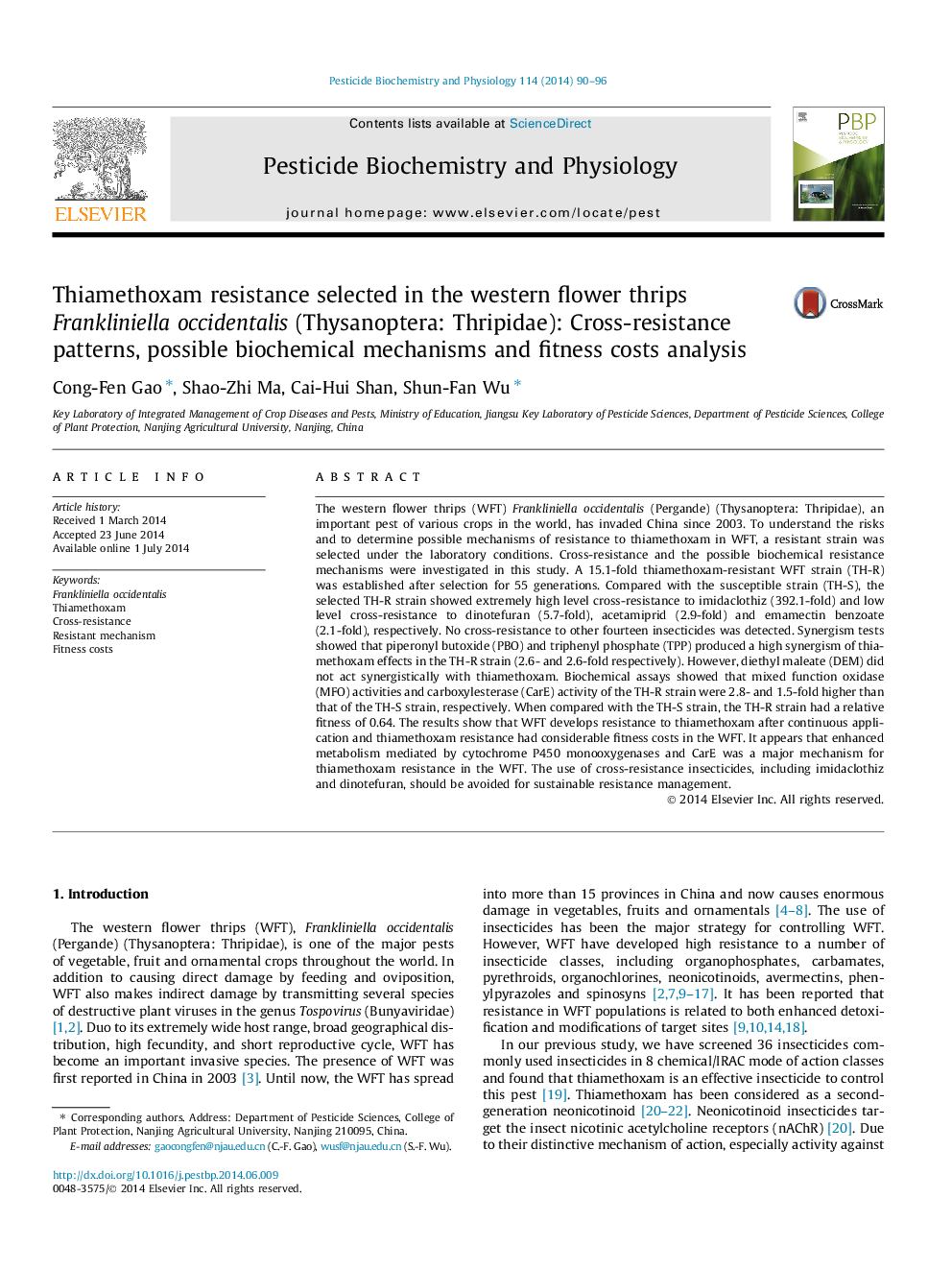| Article ID | Journal | Published Year | Pages | File Type |
|---|---|---|---|---|
| 2009246 | Pesticide Biochemistry and Physiology | 2014 | 7 Pages |
•A 15.1-fold thiamethoxam-resistant Frankliniella occidentalis strain was established after selection for 55 generations.•Highest levels of cross resistance to imidaclothiz was detected in thiamethoxam-resistant F. occidentalis strain.•Enhanced detoxification by P450 and CarE was a major mechanism for thiamethoxam-resistance in the F. occidentalis.•Thiamethoxam-resistant had considerable fitness costs in the F. occidentalis.
The western flower thrips (WFT) Frankliniella occidentalis (Pergande) (Thysanoptera: Thripidae), an important pest of various crops in the world, has invaded China since 2003. To understand the risks and to determine possible mechanisms of resistance to thiamethoxam in WFT, a resistant strain was selected under the laboratory conditions. Cross-resistance and the possible biochemical resistance mechanisms were investigated in this study. A 15.1-fold thiamethoxam-resistant WFT strain (TH-R) was established after selection for 55 generations. Compared with the susceptible strain (TH-S), the selected TH-R strain showed extremely high level cross-resistance to imidaclothiz (392.1-fold) and low level cross-resistance to dinotefuran (5.7-fold), acetamiprid (2.9-fold) and emamectin benzoate (2.1-fold), respectively. No cross-resistance to other fourteen insecticides was detected. Synergism tests showed that piperonyl butoxide (PBO) and triphenyl phosphate (TPP) produced a high synergism of thiamethoxam effects in the TH-R strain (2.6- and 2.6-fold respectively). However, diethyl maleate (DEM) did not act synergistically with thiamethoxam. Biochemical assays showed that mixed function oxidase (MFO) activities and carboxylesterase (CarE) activity of the TH-R strain were 2.8- and 1.5-fold higher than that of the TH-S strain, respectively. When compared with the TH-S strain, the TH-R strain had a relative fitness of 0.64. The results show that WFT develops resistance to thiamethoxam after continuous application and thiamethoxam resistance had considerable fitness costs in the WFT. It appears that enhanced metabolism mediated by cytochrome P450 monooxygenases and CarE was a major mechanism for thiamethoxam resistance in the WFT. The use of cross-resistance insecticides, including imidaclothiz and dinotefuran, should be avoided for sustainable resistance management.
Graphical abstractFigure optionsDownload full-size imageDownload as PowerPoint slide
